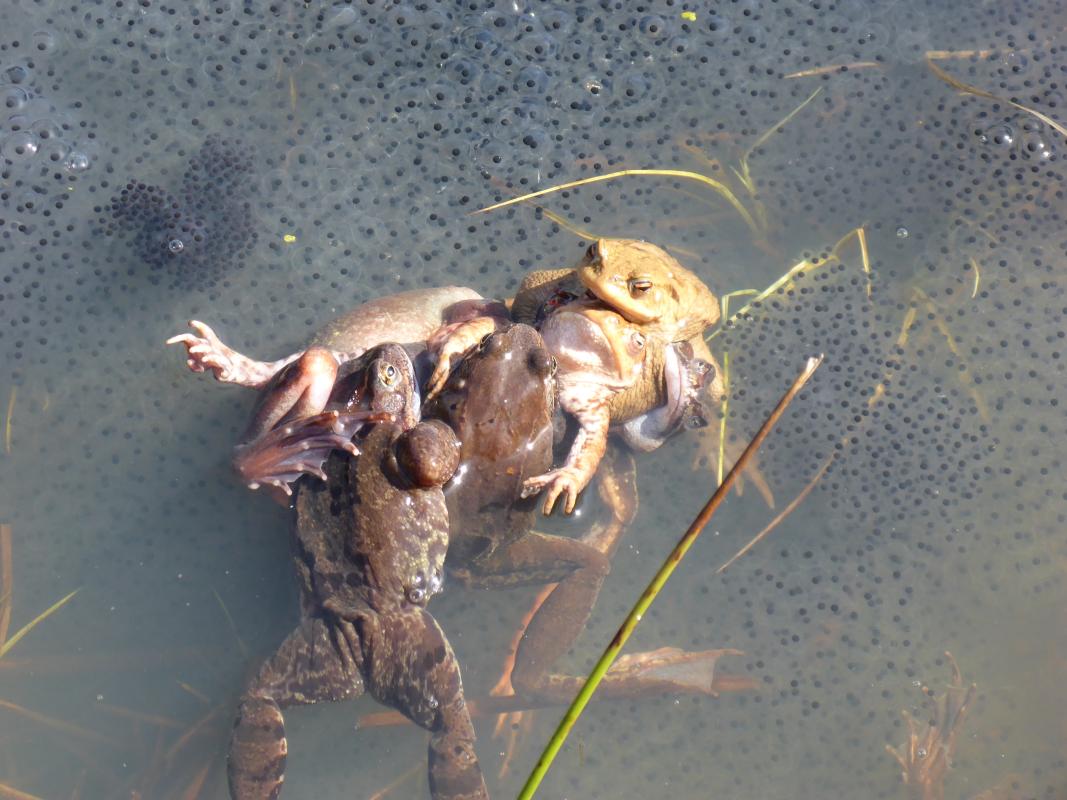A new study by Carolin Dittrich and Mark-Oliver Rödel from the Museum für Naturkunde in Berlin, published in the open access journal 'Royal Society Open Science', shows that, contrary to previous assumptions, female common frogs can reject males and have developed a variety of mate avoidance behaviors to do so.
Explosive breeding species are frogs or toads with a very short reproductive period. Breeding is usually limited to a few days to two weeks in early spring. During this time hundreds to thousands of animals gather at the pond. The females must grow older to breed and are often unable to do so every year, but the males gather at the pond every year. Thus, the males outnumber the females by a large margin and compete for the rarer sex. The males are not choosy and will cling to anything that moves with great vigor. If another male is caught, he will give a “release-call” to indicate the mistake to the grabbing male. It was previously thought that the females in these spawning aggregations could not defend themselves against male coercion. It is not uncommon for many males to cling to a single female, forming a 'mating ball'. The female often dies in the process. Carolin Dittrich and Mark-Oliver Rödel from the Museum für Naturkunde in Berlin have now shown that females do know how to defend themselves, and with very different behaviors.
The most common behavior used by females to escape the male's grip was to turn around her axis. The researchers also observed females uttering two different calls: a deeper, lower-frequency 'grunt' that mimics the male's 'release' call, and a higher-frequency 'squeak'. The meaning of the latter is so far unclear. The final and most astonishing behavior was tonic immobility, commonly known as feigning death, in which females stiffly extend their arms and legs away from their bodies and remain immobile until the male releases them.
"Tonic immobility in the context of mating is exceptional and very rarely observed. I know of only a few studies that have found tonic immobility associated with mating, for example in spiders or dragonflies. It is generally assumed that this strategy is used as a last resort to avoid predation," says Dittrich. Rödel adds: "We therefore suspect that this defensive behavior has evolved to protect the female from the formation of “mating balls”, which can often lead to the death of the female. Calling allows females to show that they are not ready to mate, and if this is of no use, stressed females can fall into tonic immobility". Dittrich also emphasizes: "Our study shows impressively that even very common and well-studied native species can still hold big surprises.”
Article citation:
Dittrich C, Rödel M-O. 2023 Drop dead! Female mate avoidance in an explosively breeding frog. R. Soc. Open Sci. 10: 230742. https://doi.org/10.1098/rsos.230742

